
Rationing is the controlled distribution of scarce resources, goods, services, or an artificial restriction of demand. Rationing controls the size of the ration, which is one's allowed portion of the resources being distributed on a particular day or at a particular time. There are many forms of rationing, although rationing by price is most prevalent.

Charles Locke Eastlake was a British architect and furniture designer.
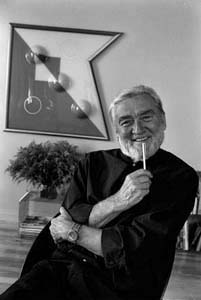
Verner Panton is considered one of Denmark's most influential 20th-century furniture and interior designers. During his career, he created innovative and futuristic designs in a variety of materials, especially plastics, and in vibrant and exotic colors. His style was very "1960s" but regained popularity at the end of the 20th century. As of 2004, Panton's best-known furniture models are still in production.
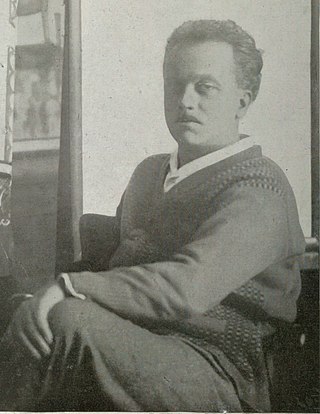
Raoul Dufy was a French painter associated with the Fauvist movement. He gained recognition for his vibrant and decorative style, which became popular in various forms, such as textile designs, and public building decorations. Dufy is most remembered for his artwork depicting outdoor social gatherings. In addition to painting, he was skilled in various other fields, including drawing, printmaking, book illustration, scenic design, furniture design, and planning public spaces.

Wells Wintemute Coates was an architect, designer and writer. He was, for most of his life, an expatriate Canadian who is best known for his work in England, the most notable of which is the Modernist block of flats known as the Isokon building in Hampstead, London.

The Museum of Domestic Design and Architecture (MoDA) was a museum in North London, England, housing one of the most comprehensive collections of 19th- and 20th-century decorative arts for the home.
G Plan is a British furniture brand. It began as a pioneering range of furniture in the United Kingdom produced by E Gomme Ltd of High Wycombe. The success of G Plan led to E Gomme becoming one of the UK's largest furniture manufacturers, with profits increasing sixfold between 1952 and 1958 when it was floated as an IPO. Since 2005, G Plan has been a subsidiary of Sofa Brands International.

Frederick James Marquis, 1st Earl of Woolton,, was an English businessman and politician who served as chairman of the Conservative Party from 1946 to 1955.

Rationing was introduced temporarily by the British government several times during the 20th century, during and immediately after a war.
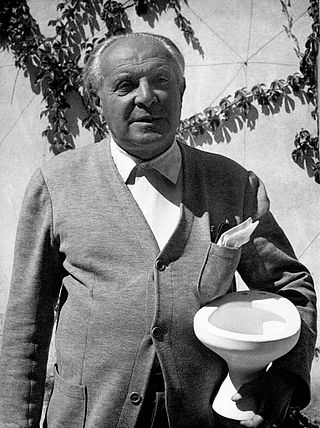
Giovanni "Gio" Ponti was an Italian architect, industrial designer, furniture designer, artist, teacher, writer and publisher.
Heal's is a British furniture and homeware retail company comprising seven stores, selling a range of furniture, lighting and home accessories. The business was started in 1810 by John Harris Heal, and its headquarters have been located in Tottenham Court Road since 1818. Under Sir Ambrose Heal, the company introduced Arts and Craft style to mechanised furniture production, making it available to the middle classes. In 2001, an official guide to the archive at the Victoria & Albert Museum, wrote that for over two centuries Heal's had been known for promoting modern design and for employing talented young designers. Since 2001, the business has been owned by Wittington Investments, a company owned by the Weston family.

Robin Day, OBE, RDI, FCSD was one of the most significant British furniture designers of the 20th century, enjoying a long career spanning seven decades. An accomplished industrial and interior designer, he was also active in the fields of graphics and exhibitions.

Enid Crystal Dorothy Marx, RDI, was an English painter and designer, best known for her industrial textile designs for the London Transport Board and the Utility furniture Scheme. Marx was the first female engraver to be designated as a Royal Designer for Industry.
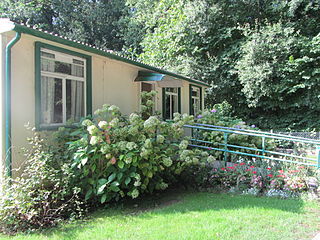
Prefabs were a major part of the delivery plan to address the United Kingdom's post–World War II housing shortage. They were envisaged by war-time prime minister Winston Churchill in March 1944, and legally outlined in the Housing Act 1944.

Børge Mogensen, was a Danish furniture designer.

The CC41 symbol, also known as the Utility mark, was an identifying mark of products produced and sold as part of the British Government's Second World War Utility Clothing Scheme.

The Utility Clothing Scheme was a programme introduced in the United Kingdom during the Second World War. In response to the shortage of clothing materials and labour due to wartime austerity, the Government's Board of Trade put the Utility Clothing Scheme in place in order to standardise the production, sale, and purchase of clothing in wartime. The Scheme embodied a variety of measures to ensure the availability of fabric, clothing, and shoes, which were proposed to ensure availability, no matter of the consumer’s socioeconomic circumstances.

William Arthur Smith Benson was a British designer active in the Arts and Crafts Movement and an early exponent of electrical lighting design. He is regarded as the greatest British arts and craft lighting designer. Benson was a founding member of the Art Workers' Guild in 1884, and the Design and Industries Association in 1915.

Gerald Summers (1899–1967) was an American mid-century modern furniture designer. He came to prominence with his design for the Bent Plywood Armchair. Another of his noted works was the Two-Tier Table. Both pieces were designed in 1934 and manufactured by Makers of Simple Furniture, the firm he founded.
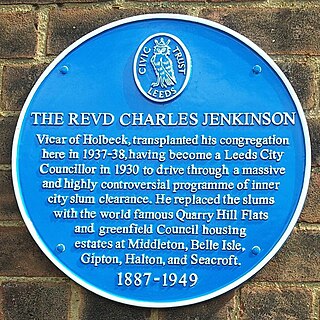
Charles Jenkinson was a Church of England clergyman, housing reformer, and Leeds councillor.

























